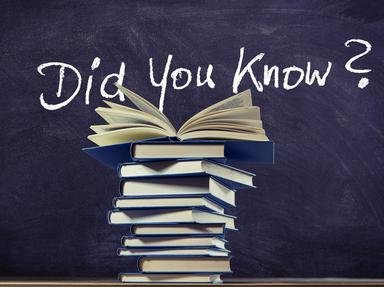Quiz Answer Key and Fun Facts
1. General Dynamics Electric Boat is a company which has been the main manufacturer of American submarines for over 100 years. Which town of Connecticut is home to its main shipyard?
2. Which of these is the creator goddess in the traditional religion of the Ijaw people of Nigeria?
3. Which artist painted Native American Chief, Wi-jún-jon (or "Pigeon's Egg Head") in 1831?
4. Which of these is a Greek soup made from lamb offal?
5. Which Catholic pope excommunicated Queen Elizabeth I of England in 1570?
6. Who became the third Prime Minister of India in 1966?
7. In the Periodic Table, what is the first transuranium element?
8. King James III of Scotland was killed in which of these battles?
9. SS Kiangya was a Chinese steam-powered ship that exploded in 1948 at the mouth of what river?
10. Which American Major League Baseball team was originally named the "New York Gothams"?
11. Who wrote "La Marseillaise," the national anthem of France?
12. The first Japanese satellite to be launched into orbit was which of these?
13. Written in the 16th century, "Ramcharitmanas" is an epic poem authored by which poet?
14. The River Suir empties into the Atlantic Ocean via which county of Ireland?
15. Fannie Almara Quain was the first woman born in North Dakota to do which of these?
16. In 1922, the Chinese city of Shantou was afflicted with which of these?
17. Gmelin's test is a chemical test used to detect which of these in urine?
18. Voith-Arena is the home ground to which of these football teams?
19. The Battle of Alcolea of 1868 took place on which river?
20. The occipitalis muscle is a muscle which covers part of which area of the human body?
Source: Author
LuH77
This quiz was reviewed by FunTrivia editor
agony before going online.
Any errors found in FunTrivia content are routinely corrected through our feedback system.

